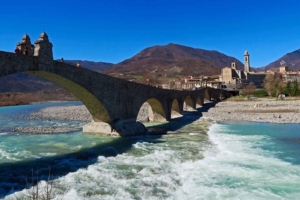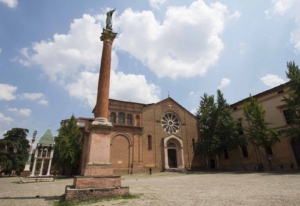Rocchetta Mattei: a castle of mysteries and marvels
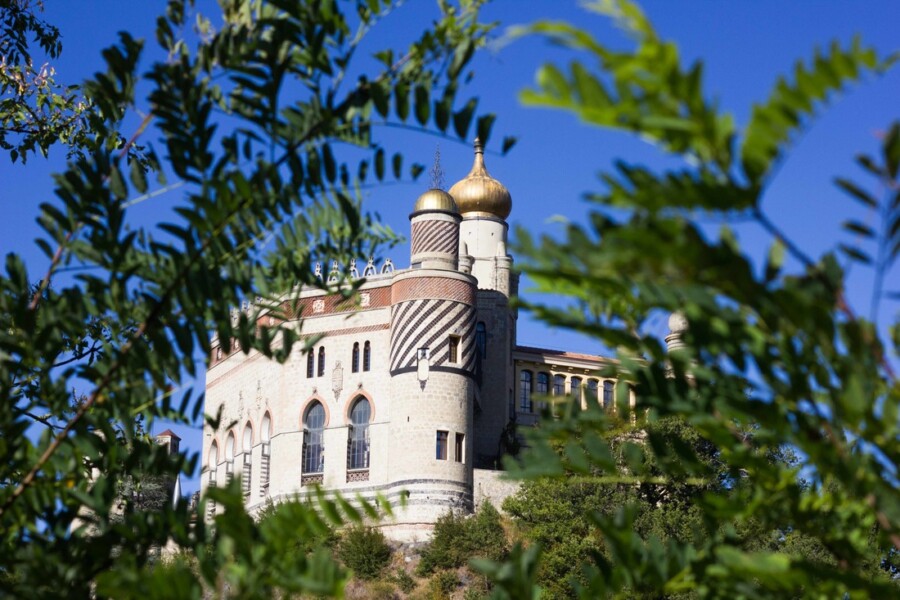
The history of Rocchetta Mattei: a visionary’s dream
Who built Rocchetta Mattei?
Rocchetta Mattei was the creation of Count Cesare Mattei, a brilliant and unconventional figure of 19th-century Italy.
Born in Bologna in 1809, Mattei initially gained fame as a politician but later turned his focus to medicine.
He founded electrohomeopathy, an alternative healing method that combined plant-based remedies with electrical principles.
His work attracted international attention, and his treatments were so famous that Fyodor Dostoevsky mentioned Mattei in his novel The Brothers Karamazov.
Mattei’s success also led to the establishment of one of the first global pharmaceutical companies, making him a pioneer of modern drug manufacturing.
From vision to reality: building Rocchetta Mattei
In 1850, Mattei purchased a piece of land in the Appennino Bolognese, where he began building his dream home.
The construction of Rocchetta Mattei was deeply influenced by his eclectic tastes and symbolic vision.
The castle’s clock tower, for example, was conceived as the "Sun," with the surrounding rooms representing planets orbiting it.
Mattei filled the structure with Christian, pagan, astrological, and esoteric symbols, making it a treasure trove of spiritual and artistic references.
At the entrance, visitors are greeted by statues of a lion, a hippogriff (yes, Harry Potter fans, it’s that creature), and harpies, setting the tone for the magical journey inside.
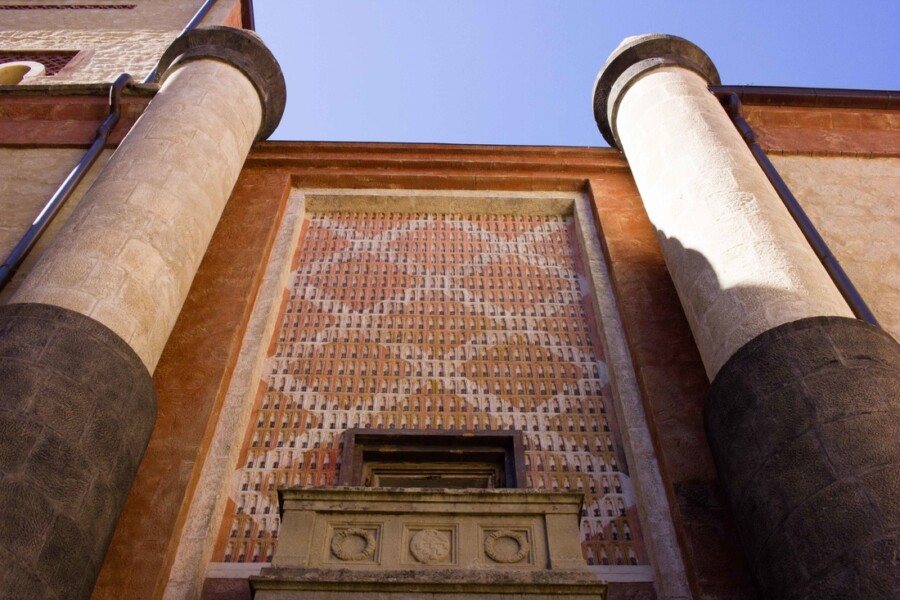
The fall and rise of Rocchetta Mattei
A troubled time after Mattei’s death
After Count Mattei’s death in 1896 at the age of 87 (short of his intended 90th birthday celebration), the castle entered a period of decline.
During World War II, the property was occupied and severely damaged by German troops, marking a dark chapter in its history.
In the 1960s, Rocchetta Mattei was repurposed as a restaurant and hotel, but it eventually closed in 1989 following the death of its owner.
For decades, the castle remained abandoned and forgotten.
The rebirth: Rocchetta Mattei reopens
Thanks to extensive restoration efforts, Rocchetta Mattei reopened to the public in 2015.
Today, visitors can once again marvel at its architectural beauty, explore its mysterious rooms, and learn about the legacy of Count Mattei.
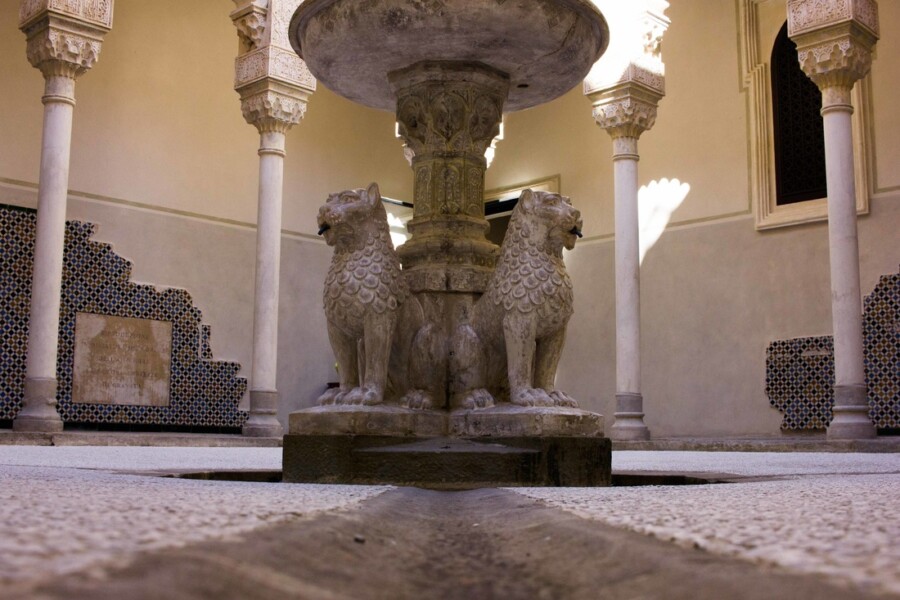
The unique architecture of Rocchetta Mattei
A kaleidoscope of styles and cultures
One of the most captivating aspects of Rocchetta Mattei is its eclectic architecture.
The castle is a blend of Moorish, neo-Gothic, and medieval influences, with each room showcasing a unique theme.
Walking through Rocchetta Mattei feels like stepping into a dream, where every corner reveals something new and unexpected.
Highlights include:
- The chapel: this room is a miniature version of the Mezquita of Córdoba, complete with striped columns and a decorated ceiling.
The slanting columns and surreal design elements make it feel like you’ve entered an Escher painting. - The room of the 90s: Mattei designed this room to celebrate his 90th birthday alongside 90 guests, each 90 years old. Sadly, he passed away at 87, leaving this dream unfulfilled.
- The courtyard: inspired by Islamic art, the courtyard features intricate geometric patterns and vibrant mosaics.
Endless symbols and secrets
Every detail of Rocchetta Mattei tells a story. From its architectural features to its decorations, the castle is filled with Christian, pagan, and astrological references.
Symbols of life, death, and the cosmos are hidden throughout, inviting visitors to uncover their meanings.
Among the castle’s many secrets is the legend of a diamond hidden in one of the pyramids that form Mattei’s laboratory ceiling. While no one knows if the diamond truly exists, the story adds to the air of mystery surrounding the castle.
If you’re feeling romantic, you’ll be pleased to know that Rocchetta Mattei is also a wedding venue.
Imagine celebrating your love in a place steeped in beauty and mystery!
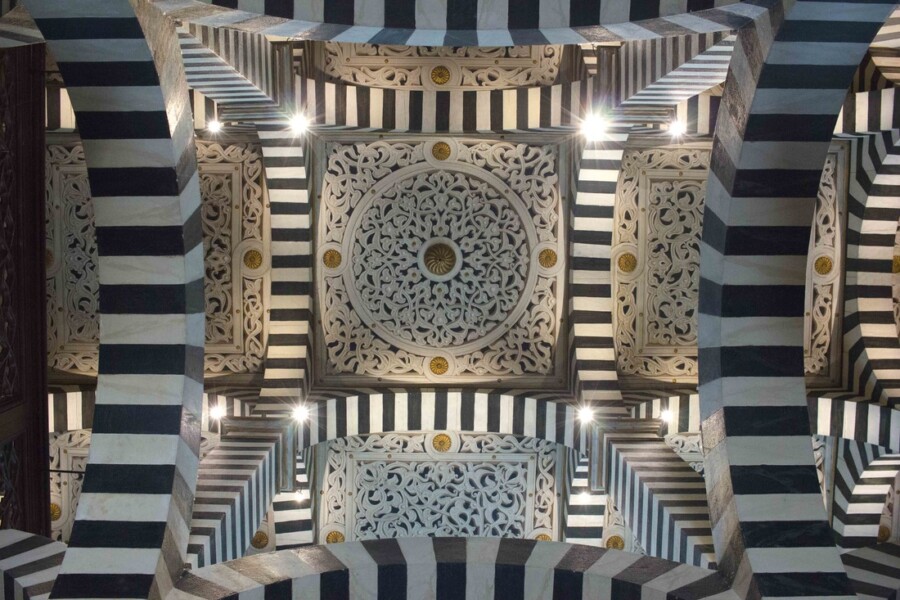
Visiting Rocchetta Mattei: plan your trip
Getting there
The best way to get to Rocchetta Mattei is by car, as it offers the most flexibility and convenience.
The castle is located about 50 km southwest of Bologna, and the drive takes approximately 1 hour.
To get there, take the SS64 Porrettana road via Sasso Marconi, Marzabotto, and Vergato, following the signs for Rocchetta Mattei once you reach Riola.
If you prefer public transport, you can take a regional train from Bologna Centrale station to Riola on the Bologna-Pistoia Porrettana line.
Trains run about every hour, and the journey takes approximately 1 hour and 15 minutes. From Riola station, you have two options to reach Rocchetta Mattei:
- By bus: Take the 963 bus line, which stops near the castle. Be sure to check the bus schedule in advance as timings may vary.
- On foot: Walk approximately 1.5 km from Riola station to Rocchetta Mattei, a route that takes about 20 minutes.
The total journey by public transport, including transfers, takes around 1 hour and 35 minutes.
For those traveling by train, the ticket from Bologna to Riola is typically under €10, with the bus fare or a short taxi ride being an additional small cost.
Practical information
- Opening hours: guided tours are available, typically from late morning to early afternoon. Be sure to book in advance.
- Tickets: the entry fee is €10 and visits are allowed only in groups led by a guide. Pets and strollers are not allowed.
- Best time to visit: the spring and autumn months offer the best weather and breathtaking scenery.
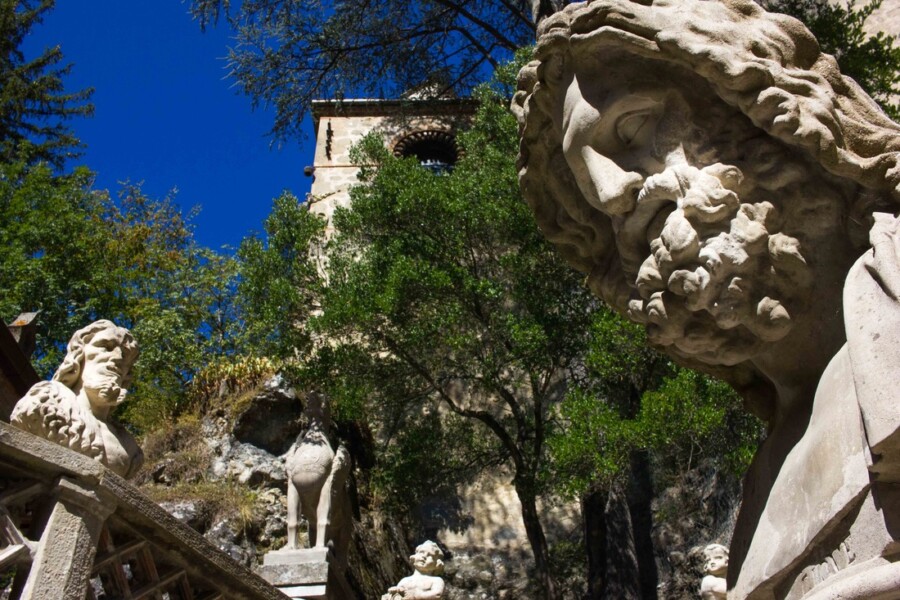
Nearby attractions: explore the Appennino Bolognese
Grizzana Morandi
While in the area, take time to visit Grizzana Morandi, a charming village known as the birthplace of Giorgio Morandi, one of Italy’s most celebrated painters.
Stop by the Casa Museo Giorgio Morandi to learn about his life and work.
The church of Alvar Aalto in Riola
Just a short drive from Rocchetta Mattei is the Church of Alvar Aalto in Riola, a modern architectural masterpiece designed by the famous Finnish architect Alvar Aalto.
Completed in 1978, this church is a striking contrast to the medieval and neo-Gothic elements of Rocchetta Mattei. Its clean lines, innovative use of light, and minimalist design make it a must-see for architecture enthusiasts.
Outdoor activities
The surrounding Appennino Bolognese offers endless opportunities for hiking, cycling, and enjoying nature.
The lush landscapes and panoramic views make it an ideal destination for outdoor enthusiasts.
Why visit Rocchetta Mattei
Rocchetta Mattei is more than a castle.
It’s a symbol of creativity, a repository of secrets, and a testament to the vision of Count Cesare Mattei.
Whether you’re fascinated by architecture, history, or simply love exploring unique places, this fairytale castle is a must-visit destination.
So why wait?
Add Rocchetta Mattei to your Italian itinerary and let its magic transport you to a world of wonder and mystery.
